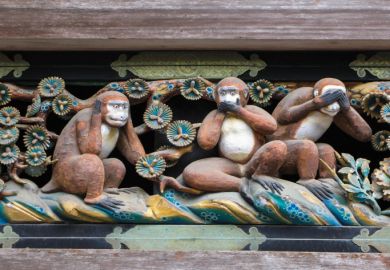On both a national and a world scale, ranking universities is now big business. And inevitably, the watchers are being watched. There are academic conferences, online debates, expert group meetings and, now, a book on the matter. There are certainly more people studying the ranking of universities than there are doing the ranking. A scholarly journal for them to publish their findings is probably the next step.
National rankings are nothing new. US News and World Report has published them since 1983. But many of the contributors to this volume are especially excited by the emergence of two sets of world rankings, one from The Times Higher and another from Shanghai Jiao Tong University in China.
These rankings have emerged because higher education is changing. Although universities are the original globalised business, there is now a top tier of world universities that attracts the best students and staff as well as the money and political attention. People within the system want to know how their institution is placed, while countries recognise that world-class universities are vital to economic success.
Although one of its editors is the director of the Shanghai rankings, The World-Class University and Ranking largely reflects university concerns at being ranked. Many contributors regard ranking as an unwelcome new pressure on academics and institutions. Much is made of the "Berlin principles" for ranking, a verbose and pompous 16-point compilation that includes such tips as "choose indicators according to their relevance and validity". The Shanghai rankings themselves fall at the third principle, the need to recognise diversity, because they rank the world's universities almost exclusively on science research. But the principles are silent on the most important point they should have contained - the need for rankings to be independent and not be produced by universities or education ministries.
Interest in rankings is growing in areas such as the Middle East, where this issue is likely to arise in an especially severe form.
Contributors to this volume point out that although a world-class university is a money-spinner, building one up is expensive. Harvard University, rated top by The Times Higher and by Shanghai, has an endowment of about $30 billion (Pounds 15 billion). It can back its hunches, support staff properly and admit students on the basis of merit. Not all universities can act in this way. Some may decide, on the basis of what they read here, that a limited but valid local orientation is more appropriate and feasible.
Contributors to this volume point out that universities that want to be global players have big obstacles to surmount. Ranking systems that take account of scholarly publishing are bound to be loaded towards medicine, so a top medical school is essential. Bigger institutions have a built-in advantage, and so do those that work and publish in English. But these biases are becoming less severe as patterns of academic publishing change.
Despite their imperfections, world rankings have an effect on local decisions. The German Government's realisation that it has too few significant universities has led it to concentrate research funding to support the emergence of a few world-class institutions. In Japan, a national ranking based solely on student admissions has now been expanded to include new criteria.
This book is certain to be the first of many on university ranking, and anyone with a serious interest in the subject will want to take a look. But it fails some quality measures itself. It does not have an index and has not been edited by a native speaker of English. But the examples it contains show that international awareness can be a spur to raise quality, and that it is important to do this in a way that is consistent with academic freedom rather than management ambition.
Martin Ince edits The Times Higher , QS World University Rankings.
The World-Class University and Ranking: Aiming Beyond Status
Editor - Jan Sadlak and Liu Nian Cai
Publisher - Unesco Cepes, Shanghai Jiao Tong University and Cluj University Press
Pages - 378
Price - $50.00
ISBN - 92 9069 184 0
Register to continue
Why register?
- Registration is free and only takes a moment
- Once registered, you can read 3 articles a month
- Sign up for our newsletter
Subscribe
Or subscribe for unlimited access to:
- Unlimited access to news, views, insights & reviews
- Digital editions
- Digital access to THE’s university and college rankings analysis
Already registered or a current subscriber? Login



